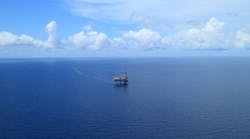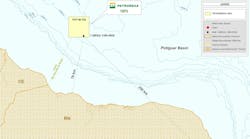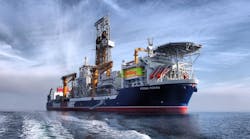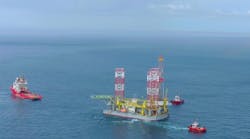Offshore staff
STOCKHOLM, Sweden – Lundin Norway has discovered a potentially large new oil and gas accumulation in the southern Norwegian Barents Sea.
The semisubmersibleIsland Innovator drilled well 7220/11-1 on the Alta prospect, 20 km (12.4 mi) northeast of the company’s Gohta discovery (well 7120/1-3) and 160 km (99 mi) from the Norwegian mainland.
The main aim was to prove hydrocarbons in Permo-Carboniferous and Triassic reservoir rocks. The well encountered a 57-m (187-ft) gross hydrocarbon column comprising 11 m (36 ft) gas and 46 m (151 ft) oil in good-quality carbonate rocks.
Two drillstem tests were conducted in the oil zone, producing a maximum of 3,260 b/d of oil and 1.7 MMcf/d (48,139 cm/d) of gas through a choke constrained by rig facilities.
Lundin estimates the recoverable resource potential in the 125-400 MMboe range.
This was the first well drilled in license PL609, awarded under Norway’s 21st Concession Round in 2011. Water depth was 388 m (1,273 ft). Lundin says the Neiden and Børselv prospects farther north in the license are also drill-ready, and both could contain sizeable resources.
Island Innovator next heads to the North Sea to drill the Kopervik exploratory well in PL625, again for Lundin.
Ashley Heppenstall, Lundin’s president and CEO, said: “This discovery is another positive step in relation to proving up sufficient resources in the Loppa High area of the Barents Sea to enable the development of oil production infrastructure. We are very excited about this discovery and the potential in the Loppa High area where we are likely to drill three or four appraisal/exploration wells in 2015.
“In PL609 we have identified several multi-hundred million barrel prospects on trend with Alta and Gohta. Our drilling successes in the Barents Sea have been made possible by extensive preparatory work including comprehensive environmental assessments and the mapping of sea bottom conditions. The Loppa High area is impacted by the Gulf Stream and as such is ice free all year and far from the maximum southern edge of the ice edge.”
10/17/2014




